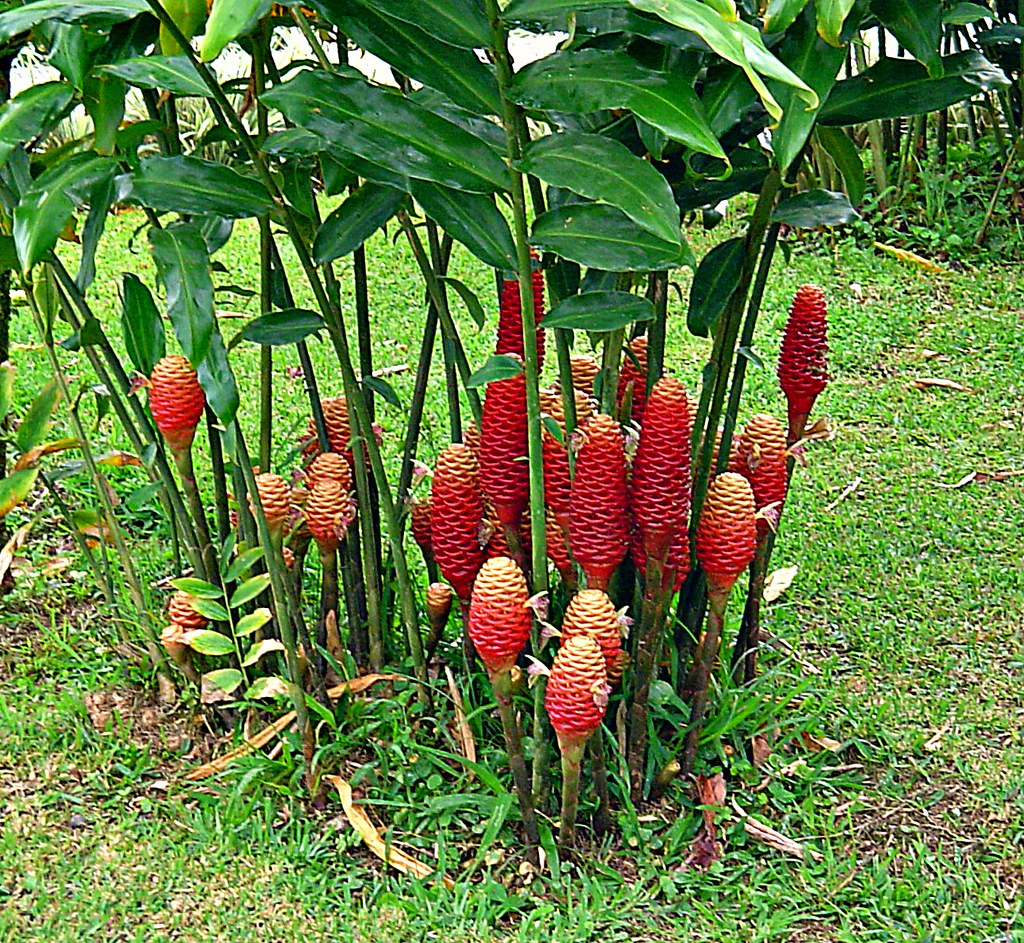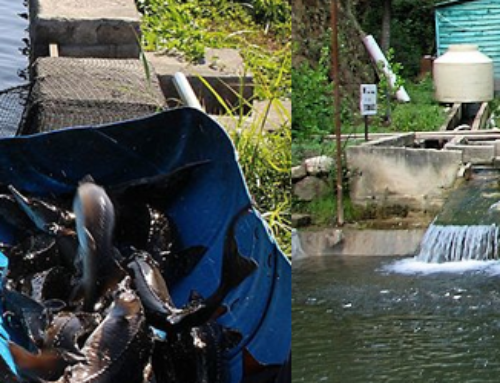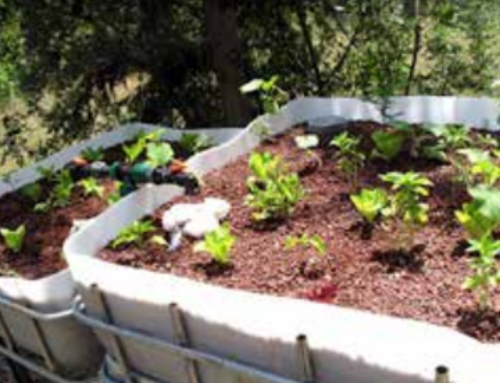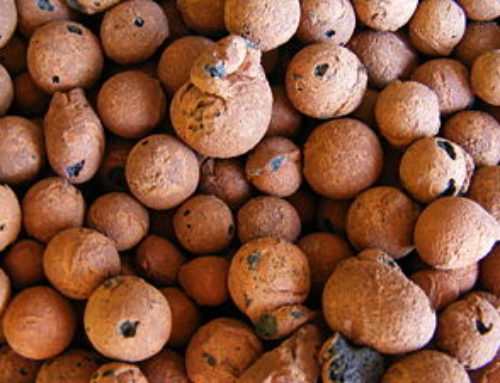 Crop selection
Crop selection
Many types of vegetables have been grown in aquaponic systems. However, the goal is to culture a crop selection that will generate the highest level of income per unit area per unit time. With this criterion, culinary herbs are the best choice. They grow very rapidly and command high market prices. The income from herbs such as basil, cilantro, chives, parsley, portulaca and mint is much higher than that from fruiting crops such as tomatoes, cucumbers, eggplant and okra.
For example, in experiments in UVI’s commercial- scale system in USA, basil production was 11,000 pounds annually at a value of $110,000, compared to okra production of 6,400 pounds annually at a value of $6,400.
Fruiting crops also require longer culture periods (90 days or more) and have more pest problems and diseases. Lettuce is another good crop for aquaponic systems because it can be produced in a short period (3 to 4 weeks in the system) and, as a consequence, has relatively few pest problems. Unlike fruiting crops, a large portion of the harvested biomass is edible. Other suitable crops are Swiss chard, pak choi, Chinese cabbage, collard and watercress. The cultivation of flowers has potential in aquaponic systems. Good results have been obtained with marigold and zinnia in UVI’s aquaponic system. Traditional medicinal plants and plants used for the extraction of modern pharmaceuticals have not been cultivated in aquaponic systems, but there may be potential for growing some of these plants. All plant production has to be coupled to the producer’s ability to market the final product.
Crop production systems
There are three strategies for producing vegetable crops in the hydroponic component. These are staggered cropping, batch cropping and intercropping.
- A staggered crop production system is one in which groups of plants in different stages of growth are cultivated simultaneously. This allows produ
 ce to be harvested regularly and keeps the uptake of nutrients from the culture water relatively constant. This system is most effective where crops can be grown continuously, as in the tropics, subtropics, or temperate greenhouses with environmental control. At UVI, the production of leaf lettuce is staggered so that a crop can be harvested weekly on the same day, which facilitates marketing arrangements. Bibb lettuce reaches market size 3 weeks after transplanting. Therefore, three growth stages of Bibb lettuce are cultivated simultaneously, and one third of the crop is harvested weekly. Red leaf lettuce and green leaf lettuce require 4 weeks to reach marketable size. The cultivation of four growth stages of these lettuce varieties allows one-fourth of the crop to be harvested weekly. In 3 years of continuous operation, UVI has harvested 148 crops of lettuce, which demonstrates the system’s sustainability. Leafy green vegetables, herbs and other crops with short production periods are well suited for continuous, staggered production systems.
ce to be harvested regularly and keeps the uptake of nutrients from the culture water relatively constant. This system is most effective where crops can be grown continuously, as in the tropics, subtropics, or temperate greenhouses with environmental control. At UVI, the production of leaf lettuce is staggered so that a crop can be harvested weekly on the same day, which facilitates marketing arrangements. Bibb lettuce reaches market size 3 weeks after transplanting. Therefore, three growth stages of Bibb lettuce are cultivated simultaneously, and one third of the crop is harvested weekly. Red leaf lettuce and green leaf lettuce require 4 weeks to reach marketable size. The cultivation of four growth stages of these lettuce varieties allows one-fourth of the crop to be harvested weekly. In 3 years of continuous operation, UVI has harvested 148 crops of lettuce, which demonstrates the system’s sustainability. Leafy green vegetables, herbs and other crops with short production periods are well suited for continuous, staggered production systems. - A batch cropping system is more appropriate for crops that are grown seasonally or have long growing periods (>3 months), such as tomatoes and cucumbers.
- Various intercropping systems can be used in conjunction with batch cropping. For example, if lettuce is intercropped with tomatoes and cucumbers, one crop of lettuce can be harvested before the tomato plant canopy begins to limit light.
Best Crop Selection for Aquaponics
Tomatoes
The humble tomato plant does exceptionally well in this water-based system. You will find it easier to control the temperature and even the amount of sun the plants get. To read more about tomatoes, read my article about Tomtatoes Aquaponics. However, it is worth noting that tomato plants tend to attract pests, which can be exceptionally difficult to get rid of.
Leafy Lettuce
Lettuce that is grown in aquaponics is one of the most productive leafy green in an aquaponics system. Leafy lettuce will thrive in water, which has a temperature of between 70 and 74 (F) 21 to 24 (C)
Watercress
This tough vegetable is one of the best plants for aquaponics because it grows so quickly. You can plant one single small plant, and it will multiply at an astonishing rate. However, you should consider whether this is the best for you. There is only so much watercress you can eat. Its ability to multiply can give you issues with your grow bed, which can become clogged.
Peppers
Peppers can be extremely difficult to grow via the standard approach to gardening. This is because they are particular about the water they consume and require plenty of sunshine. Growing them in a small aquaponics system makes sense. But, more impressively is the ability to produce extremely hot peppers as you can turn the temperature dial right up for them.
It is worth noting that peppers do not do well in a DWC aquaponic system. However, they do exceptionally well if you use the flood and drain system.
Cucumbers
Cucumbers do tend to have extensive root systems; you’ll need to watch your pipes and siphons to ensure they don’t invade and block these. They are also good at hoarding nitrogen, potentially depriving other plants in your system. For this reason, it is a good idea to give a space of between 30 and 60cm between your plants and to avoid overplanting. It’s better to start with a few and then add to your system in the future.
Cauliflower
The cauliflower is another water-based plant that flourishes in an aquaponics system. These plants are very hardy and need very little maintenance. They are also generally resistance to bugs and diseases, making it one of the best plants for aquaponics if you’re a beginner.
The cauliflower should be ready to harvest in approximately 12 weeks. However, it doesn’t like direct sunlight or frost. To avoid damage, it is best to cover the head over with its own leaves; this will help it to grow even larger.
Cabbage
You’ll need a pH range between 6.2 and 6.6 with a temperature of between 60 and 70°F. (15 to 21 °C) In general, this plant needs very little maintenance. The biggest issue is when the head splits; you’ll need to keep an eye on it to ensure dirt and disease don’t enter the cabbage through these splits. Other than this, you’ll need to pay attention to the usual pests; aphids, fungal disease, and black rot. Cabbage can be ready to harvest in as little as nine weeks.
Strawberries
 This is an excellent aquaponics plant to grow in your system. Thanks to the constant supply of nutrient-rich water and the ability to control their environment, the plants don’t need to know that it’s winter, meaning you can harvest them all year round. To grow strawberries in an aquaponics system, you’ll need to have as many plants as possible. This is because most plants will only produce a few strawberries; if you want to enjoy eating them or even sell them; then you need to have plenty of plants to create the yield.
This is an excellent aquaponics plant to grow in your system. Thanks to the constant supply of nutrient-rich water and the ability to control their environment, the plants don’t need to know that it’s winter, meaning you can harvest them all year round. To grow strawberries in an aquaponics system, you’ll need to have as many plants as possible. This is because most plants will only produce a few strawberries; if you want to enjoy eating them or even sell them; then you need to have plenty of plants to create the yield.
The good news is that each plant needs very little space, and you can use the floating raft system, tubes, or even baskets. Strawberries need very little care to flourish and make an excellent plant for the first-time grower.
Other Aquaponics Vegetables and Fruits – Crop Selection If you’re feeling adventurous, then the following are also excellent plants for aquaponics; you’ll need to monitor their environment carefully:
- Sweet corn
- Beets
- Dwarf citrus tree
- Onions
- Radishes
- Orchids
- Violas
- Microgreens
- Asparagus
- Wheatgrass
- Pak Choi
- Swiss Chard
- Arugula
- Chives
- Carrots
- Onion
Nutrient Hungry Plants
It is also useful to know which plants are nutrient hungry. This means they are better suited to the established, nutrient-rich system. You need to monitor your nitrate and EC (electrical conductivity) levels to make sure there are enough nutrients for these plants:
- Tomatoes
- Beans
- Peppers
- Squash
- Cucumbers
- Broccoli
- Cabbage
- Cauliflower
- Peas
- Flowers
- Bananas
- Citrus fruits
If you have a commercial system, it will be smart to separate the nutrient hungry plants from the less nutrient needy plants. That’s because the higher the nutrient demand is needed, the higher the EC will be. A system with a high EC is not good for low nutrient demanding plants like lettuce, and therefore they cannot go well together with high-level EC demanding plants. Click here to learn more about EC (electrical conductivity).
Best Herbs For Aquaponics
Here are some good ones to get started with:
Ginger
Ginger is a robust herb that is a surprisingly good plant for aquaponics. It has a peppery flavor that has traditionally been used in Asian dishes.
used in Asian dishes.
However, you don’t just have to eat this; it can make a fantastic ginger cordial or even ginger beer.
It is worth noting that this is a long term project. Ginger is not known to be a fast grower, even in an aquaponics system. The best thing you can do is put a couple of cuttings in one corner of your system and leave them alone. It can take as much as 12 months to grow. During this time, the plant will send out new shoots until a thick dense root base occupies the entire corner. You’ll need to keep the leaves trimmed to ensure your other aquaponics plants are not suffocating.
It may even be a good idea to give this plant its own small container; this will ensure it stays contained, and you have the ginger you need.
Basil
Basil is a member of the mint family, which explains its ability to grow rapidly. One of the best plants to grow in aquaponics is the Thai Sweet Basil. This has a light spicy flavor that complements virtually any dish. It is naturally tolerant of heat and moisture, making it an excellent choice for your aquaponics system. It is also fast. It can germinate within five days and be ready to harvest within 25 days. You’ll need to remove any flowers as soon as they form; this will lengthen the growing season. You should also never remove more than a third of the plant at a time; this will ensure it keeps growing.
Kale
 This is another of the great aquaponics plants; if not watched, it will grow out of hand very quickly. It does appear to favor a gravel growing media, although it will do well in most systems. It also requires the right temperature level. If your temperature tends to decrease, you’ll need to consider keeping your aquaponics system inside or in a greenhouse. However, temperatures over 21°C are generally a little warm for this plant. Balance is key! Do you want to read more about kale? Read my article about kale aquaponics.
This is another of the great aquaponics plants; if not watched, it will grow out of hand very quickly. It does appear to favor a gravel growing media, although it will do well in most systems. It also requires the right temperature level. If your temperature tends to decrease, you’ll need to consider keeping your aquaponics system inside or in a greenhouse. However, temperatures over 21°C are generally a little warm for this plant. Balance is key! Do you want to read more about kale? Read my article about kale aquaponics.
Plants That Don’t Like Aquaponic Systems
There are always some plants that find it difficult to thrive in an alternative system to their natural home. It is best to avoid trying to grow any of these:
Blueberries
Blueberries may be delicious and healthy, but they also have a low pH tolerance; they grow best when the pH is below 7. This can make it difficult to keep the pH level right in the water for the fish and the plants.
Chrysanthemum
This plant also has an issue with pH, but they like water with a pH of over 7. This is likely to be an issue when maintaining the right environment for your other plants. Unless you are particularly passionate about these types of plants, then anything that wants pH levels well in excess or below 7 is not a good bet for your aquaponic system.
Mint
Mint is one of the best herbs for aquaponics. It will grow quickly. That is why you should avoid planting it. The fact is it will grow so fast that there is a high risk of it choking your system and preventing anything else from growing. You are likely to spend a lot of time ripping all the roots out before trying a different vegetable or herb.
Summing up the Best Plants for Aquaponics
Aquaponic systems are not new, but they have received a lot of attention in recent years. Much of this is because they are a great way to grow virtually any plant. At the same time, crop yields can be greatly increased, and the environment better controlled. You may only be looking for the best plants for aquaponic systems to try out growing your crops. However, the reality is that any setup is part of the future; aquaponics offers the opportunity to grow far more plants and help feed the world. Just as with most monumental changes, this starts at home and will slowly spread. The best plants for aquaponics are lettuce, tomatoes, strawberries, peppers, and cucumbers. It doesn’t mean you can’t grow other plants.




